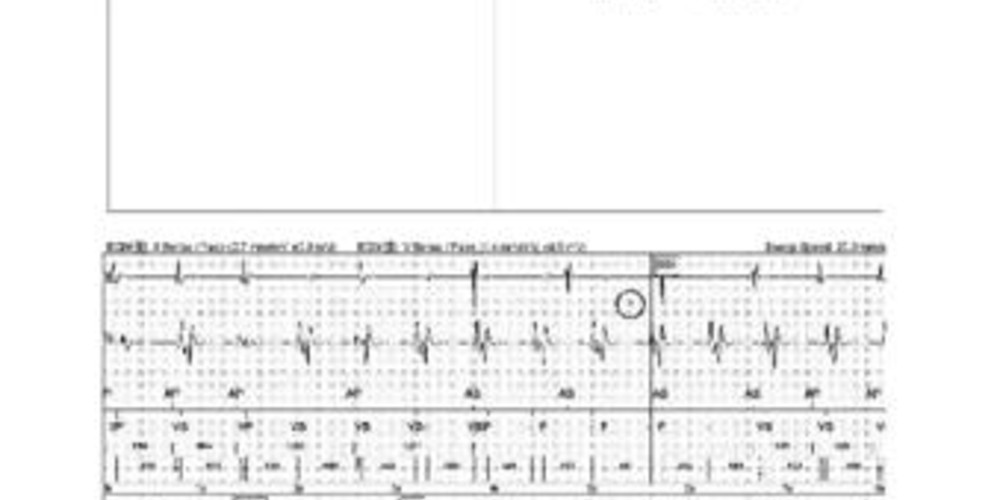VT and double counting of the R wave
Tracing
Manufacturer Abbott
Device ICD
Field Sensing
N° 14
Patient
This 78-year-old man presenting with a severely dilated cardiomyopathy and multiple episodes of slow VT, underwent implantation of an Epic dual chamber ICD. He was seen in consultation after receiving an electrical shock.
Main programmed parameters
- VF zone at 200 bpm, VT zone at 158 bpm
- 12 cycles in the VF zone and 20 cycles in the VT zone were needed for the diagnosis
- Maximum sensitivity programmed at 0.5 mV
- VF zone: six 30-J shocks (maximum strength); VT zone: 10 ramps of ATP, followed by a single 15-J shock, followed by 3 shocks at maximum strength
- DDD pacing mode at 90 bpm

Graph and trace
Narrative
Diagnosis of VF episode with delivery of probably successful 30-J shock; 670-ms detection cycle length.
Tracing
- VT episode with AV dissociation. Very wide ventricular EGM, more frequent than atrial EGM, were sensed twice. The second ventricular EGM was sensed after ventricular blanking. The repetitive and regular alternans of long-short-long cycles suggests that a physiologic cardiac signal was oversensed;
- Highly intermittent double counting and diagnosis of return of sinus rhythm;
- Repetitive oversensing, detection of VF and charge of the capacitors (trigger and asterisks);
- Electrical shock (HV, 830 V, 30 J);
- Return of sinus rhythm without double counting after 5 ventricular paced (VP) events.
Other articles that may be of interest to you







The R wave may be double counted when ventricular conduction is markedly slowed and the duration of the ventricular endocardial EGM is longer than the ventricular blanking period. Antiarrhythmic drug therapy that lengthens the QRS, for example flecainide, promotes double counting, especially at fast heart rates. Double counting of the QRS complex can occur during sinus rhythm or during an episode of VT. It can be eliminated by lengthening the ventricular blanking period. At least theoretically, any change in the ventricular sensitivity should be followed by the induction of VF to confirm that the new programming is associated with the proper detection of VF. In this patient, the lengthening of ventricular blanking to 157 ms suppressed the double counting of multiple episodes of slow VT.